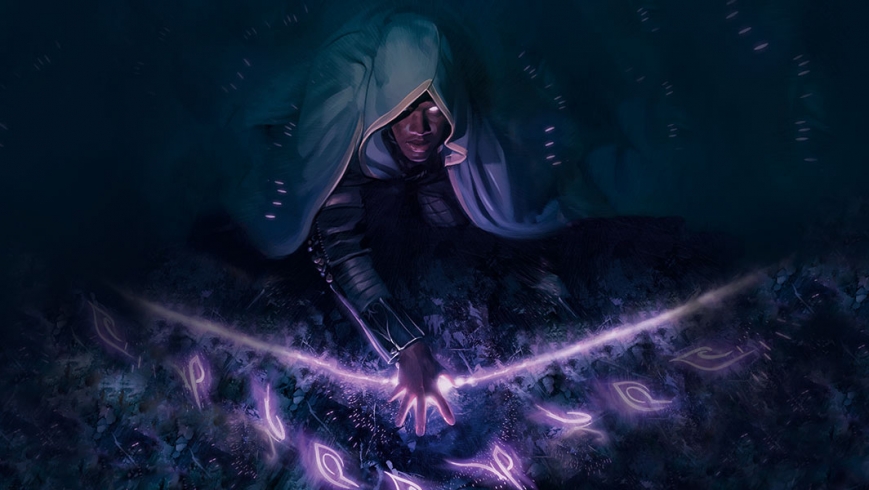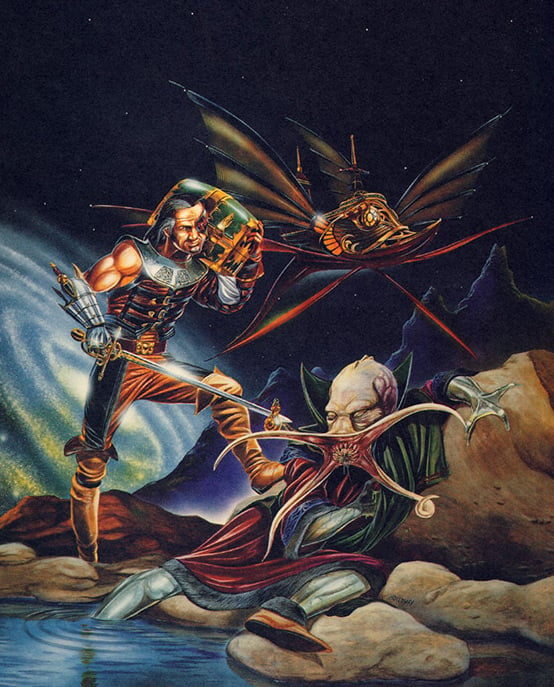D&D: WotC Talks Flavors of Magic


Arcane, divine, I’m the guy with the 12d6 Fireball.
Jeremy Crawford sat down with the D&D Beyond folks this week to talk about the nature of Magic in D&D. Aside from setting a few things about the Lore straight, this gives us a little insight as to what the D&D team is considering. I’m still trying to work out exactly where this bit fits in the grand scheme of things, but it’s a fascinating video regardless. Take a look:
A few things to consider–first, I like that this addresses the similarities between arcane and divine magics. Throughout the editions, spells have cross pollinated more and more–back in first edition the spell lists were rather distinct, but they slowly grew closer together. The mystic theurge, favored soul, and other assorted prestige classes did more to blur the lines between arcane and divine.
Then along came the Mystic, who just laughed.
And now, depending on your flavor of school, patron, deity, or druid circle, you’ve got spells that appear on all sides of the fence, which is really more like a decorative wall.
But this makes sense. Magic is at the core of everything in D&D–it permeates the multiverse, and is used by metals and immortal beings alike to rewrite reality. Crawford uses the analogy of a programming language to explain interactions; clerics and other divine spellcasters learn to make the world give them what they need, arcane types are more like hackers who mess with the code to accomplish what they want.
Cast this.
Interestingly, I could see the same argument but flipped, with Clerics and Druids learning backdoor hacks because the gods speak the language of the universe and can teach you how to reprogram it, so to speak, while the arcane types learn strict rules which are proven to change reality a certain way.
Either way, the thematic difference between arcane and divine is on display here–and it fits the expanded cosmology we’ve been getting in these last few videos. We’ve had a lot of stuff that touches on divinity and the nature of reality lately: resurrection and death, the origin of elves and feuding in the heavens. Now this. There’s a lot of behind-the-scenes groundskeeping going on, which could be a good way to prime the pump to set out rules for the planes. After all of magic is a part of all reality, it’d be at the center of a book about the planes. Same with the deities and other beings that transcend the planes. I’m curious though as to how all of this fits in consideration with other settings.
Baseline D&D is getting fleshed out–bit is that detail there to help differentiate when they move to other settings? After all you have to have a “how magic works” section before you have a “how magic works in Athas,” section, say. And if we go back further and look at the Mind Flayer/Gith videos, we get a sense of a few big stories as entry points to understand the cosmos of D&D.
All this makes me think we’re getting a stealth preview of what to expect from the settings book–especially with the latest Unearthed Arcana reading a bit like something straight out of Eberron. We’ll have a few months to wait, but if these videos are anything to go by, it’ll be worth it.
In the meantime, happy adventuring and remember, whether arcane or divine, the real magic is friendship.








